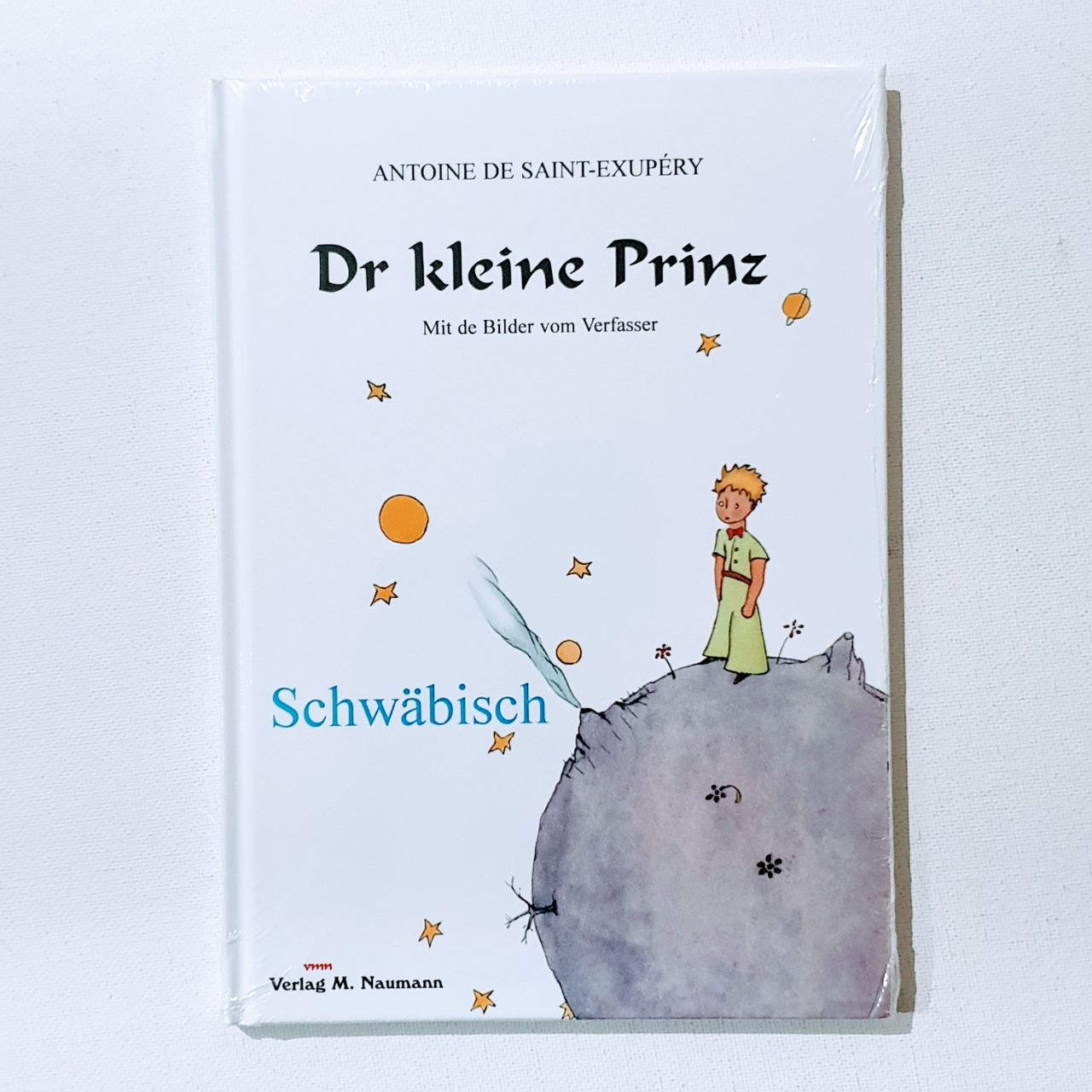
Dr Kleine Prinz — in Swabian.
The Swabian language, more accurately referred to as the Swabian dialect, is a group of Alemannic dialects spoken in Swabia, a region in southwestern Germany that includes parts of the modern states of Baden-Württemberg and Bavaria. Swabian is part of the Upper German branch of the Germanic language family, closely related to other Alemannic dialects spoken in Switzerland, Alsace (France), and Liechtenstein.
Swabian is known for its distinct pronunciation features, including the Swabian “schwa” or “Schwäbisch Schwa”, which often turns the final “-en” of Standard German words into “-a”. For example, “machen” (to make/do) becomes “machâ”. The dialect also features a variety of unique vowel sounds and diphthongs that differ significantly from Standard German.
Like other German dialects, Swabian has its own grammatical peculiarities. This includes variations in verb conjugations, use of articles, and the formation of plurals. Swabian uses diminutives extensively, often adding “-le” to nouns, a feature that endears the dialect to both speakers and listeners.
Swabian is widely used in everyday life in Swabia, especially in rural areas and among older generations. While it has often been the subject of humorous stereotypes in broader German culture, there is a strong sense of regional identity and pride associated with the dialect. In urban areas and among younger people, there is a tendency to switch between Swabian and Standard German depending on the context.


